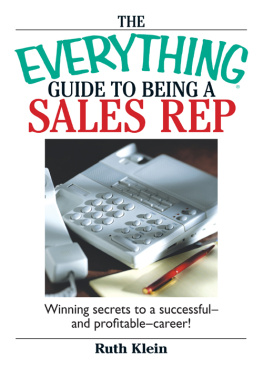
Cover image: C. Wallace.
Cover design: C. Wallace.
Copyright 2013 by Corey Sommers and David Jenkins. All rights reserved.
Illustrations by Truscribe.
Published by John Wiley & Sons, Inc., Hoboken, New Jersey.
Published simultaneously in Canada.
No part of this publication may be reproduced, stored in a retrieval system, or transmitted in any form or by any means, electronic, mechanical, photocopying, recording, scanning, or otherwise, except as permitted under Section 107 or 108 of the 1976 United States Copyright Act, without either the prior written permission of the Publisher, or authorization through payment of the appropriate per-copy fee to the Copyright Clearance Center, 222 Rosewood Drive, Danvers, MA 01923, (978) 750-8400, fax (978) 646-8600, or on the web at www.copyright.com. Requests to the Publisher for permission should be addressed to the Permissions Department, John Wiley & Sons, Inc., 111 River Street, Hoboken, NJ 07030, (201) 748-6011, fax (201) 748-6008, or online at www.wiley.com/go/permissions.
Limit of Liability/Disclaimer of Warranty: While the publisher and author have used their best efforts in preparing this book, they make no representations or warranties with the respect to the accuracy or completeness of the contents of this book and specifically disclaim any implied warranties of merchantability or fitness for a particular purpose. No warranty may be created or extended by sales representatives or written sales materials. The advice and strategies contained herein may not be suitable for your situation. You should consult with a professional where appropriate. Neither the publisher nor the author shall be liable for damages arising herefrom.
For general information about our other products and services, please contact our Customer Care Department within the United States at (800) 762-2974, outside the United States at (317) 572-3993 or fax (317) 572-4002.
Wiley publishes in a variety of print and electronic formats and by print-on-demand. Some material included with standard print versions of this book may not be included in e-books or in print-on-demand. If this book refers to media such as a CD or DVD that is not included in the version you purchased, you may download this material at http://booksupport.wiley.com. For more information about Wiley products, visit www.wiley.com.
Library of Congress Cataloging-in-Publication Data:
Sommers, Corey.
Whiteboard Selling: Empowering Sales through Visuals/Corey Sommers and David Jenkins.
ISBN: 978-1-118-37976-9 (pbk); ISBN: 978-1-118-61227-9 (ebk); ISBN: 978-1-118-46157-0 (ebk); ISBN: 978-1-118-46155-6 (ebk)
1.SellingAudio-visual aids. I. Jenkins, David. II. Title.
HF5438.25
658.850284dc23
2013000324
Foreword
Of all of our inventions for mass communication, pictures still speak the most universally understood language.
Walt Disney
K nowledge is power. Prior to the early 1990s, salespeople had itbuyers didn't. Today the tables have turned and buyers can now get information about your products and services whenever they need it, thanks to the Internet.
Allow me to expand on this. A commonly held belief among many executive leadership teams is that the keys to a good sales force are: (1) to make sure they have deep product knowledge and (2) that they can deliver a compelling pitch about their products and services. Operating on those beliefs, sales organizations developed deeply ingrained cultures where product training was mandated, centrally prepared and tightly controlled sales decks were developed, and specific step-by-step sales processes were implemented. There was a great deal of focus on the delivery of the sales pitch, and a bevy of feature- and function-rich materials provided as leave-behinds. These methods were effective during most of the twentieth century because salespeople were the most common source of information for buyers. It just made sense to create a business process at the heart of which was control of the information flow to buyers through sellers.
Unfortunately, the preferences of buyers (particularly executive ones) have changed. Due in large part to the Internet, the pendulum has shifted and buyers are often more informed about the products and services than the salespeople. Salespeople who don't add value only add cost to the value exchange. In order to squeeze out costs, professional procurement organizations are increasingly active in more buying negotiations. Since the tables have turned, and these buyers now have more information than their sales counterparts, they are winning. This development is the single biggest driver behind the margin erosion felt by most B2B businesses.
In response, many sales leaders are directing their teams to bypass procurement functions and sell higher in those organizations. The higher the level of executive targeted, the less interested they are in learning about products and services and the more interested they are in the role sellers play in helping them meet objectives or solve problems. Understandably, then, a new form of communication is required but few sales forces have figured out the right formula to elevate who they sell to or how to cross-sell their products. Forrester Research has been studying the perceptions executives have about sellers in our annual buyers insight study. Less than 20 percent of these executives find that the common salesperson adds value, and 68 percent believe salespeople are only wired to launch into some prepared pitch about their products or services. Clearly, something needs to change.
So, why is communicating with executives so different? For starters, the scope of their responsibilities is much broader than their subordinates', so the issues they want to tackle are more holistic in nature. In order to get their arms around all of the moving parts, executives like to visualize the system in order to make sure they have visibility into all of the cause-and-effect relationships they need to address in order to be successful. In addition, these people have risen through the ranks to become leaders in their organizations because they have proven they can produce results. Thus, they are much more inclined to discuss an example about how other customers have worked with your firm to solve problems or meet goals, and they really want to hear about common pitfalls and how other people like them have worked around them. The scope of these conversations and their dynamic nature are not a fit with a traditional product-centric, prepared pitch-driven communication style. It requires a fundamentally different approach.
This is why this book is so important. While the concept of using a whiteboard to communicate complex ideas is not a new one, creating an overall architecture and process for developing the content and equipping salespeople with the skills to create one is. What Corey Sommers and David Jenkins do in this book is to first establish the basic attributes of how a whiteboard discussion framework should be constructed to effectively empower sellers with a safety net to stay relevant to an executive audience, and then show the steps for how to convert prose-based messages into a visual format. Finally, Corey and David provide the common requirements and whiteboarding best practices to properly train salespeople to be effective in client situations. When successfully executed, this new medium of communication allows for much faster ramp-up times of salespeople to deliver a complex message, while at the same time reducing the noise inherent in traditional presentation approaches.
Scott Santucci
Research Director and Principal Analyst
Next page









